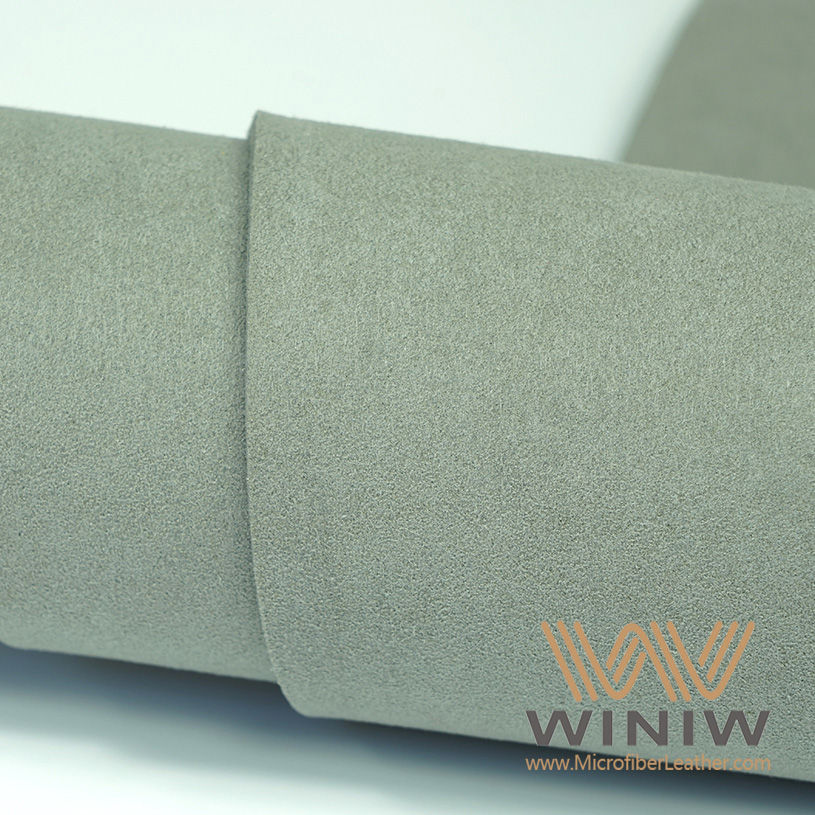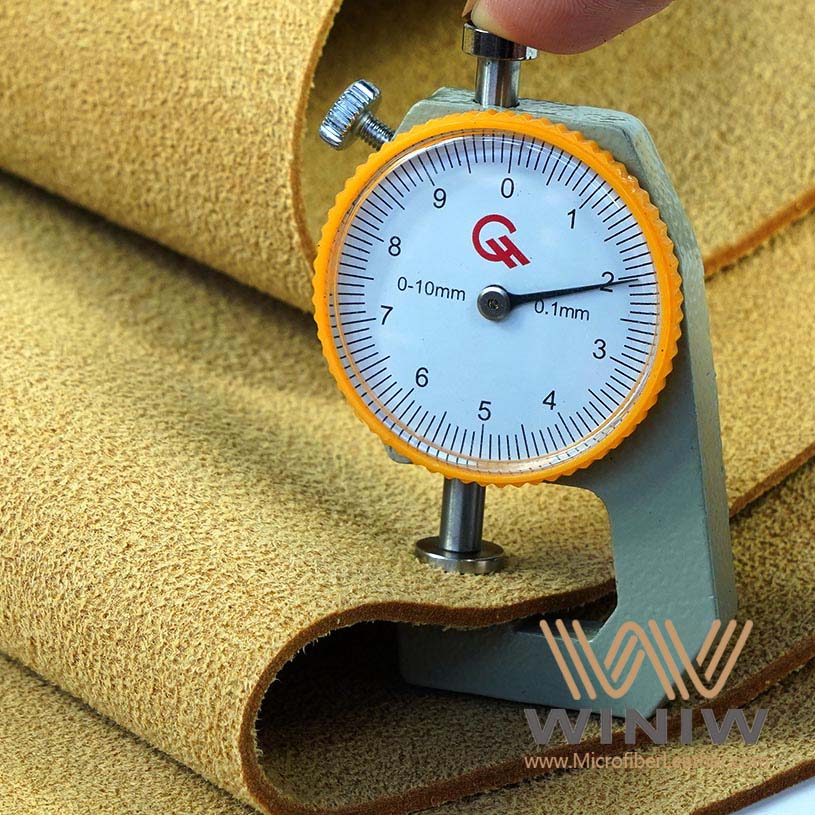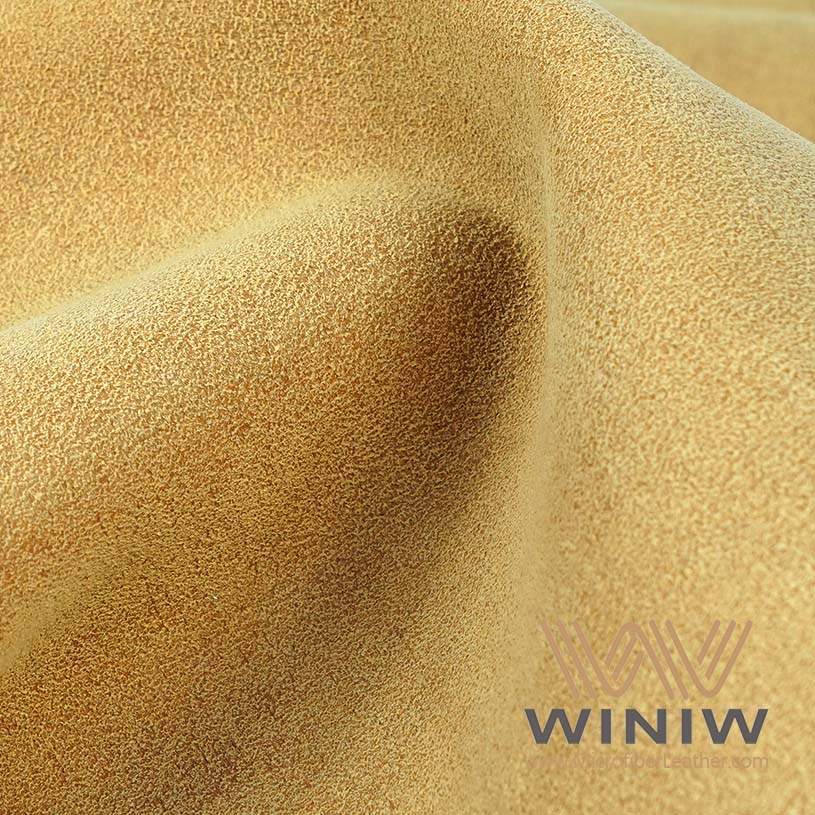
يمكنك بسهولة تحديد ما يحدد جلد نوبوك الجلد المدبوغ بعيدًا عن الجلد المدبوغ عندما تنظر إلى أصله وملمسه. نوبوك يُصنع جلد السويد من الطبقة الخارجية الأكثر صلابة، مما يمنحه بنيةً أكثر سمكًا ومتانة. هذا يجعله أكثر متانة وأقل عرضة للخدوش أو الاحتكاك. أما السويد، فيستخدم طبقة سفلية أكثر نعومة، مما ينتج عنه ملمس رقيق يميل للتآكل بسرعة.
يتحمل النوبوك الاستخدام المتكرر بشكل جيد ويحافظ على مظهره لفترة أطول.
يبدو الجلد المدبوغ أكثر نعومة ولكنه يتآكل بسرعة أكبر.
إن معرفة هذه الاختلافات تساعدك على اختيار الجلد المناسب لاحتياجاتك والعناية به بشكل صحيح.
جلد سويدي من جلد النوبوك يعتبر أكثر متانة من الجلد المدبوغ لأنه يأتي من الطبقة الخارجية للجلد، مما يجعله مقاومًا للخدوش والتآكل.
يوفر الجلد المدبوغ ملمسًا أكثر نعومة ولكنه يتآكل بشكل أسرع، مما يجعله أكثر ملاءمة لعناصر الموضة بدلاً من الاستخدام اليومي.
العناية الجيدة ضرورية لكلا المادتين. يحتاج جلد النوبوك إلى صيانة أقل، بينما يتطلب الجلد المدبوغ تنظيفًا منتظمًا لمنع البقع.
اختر جلد النوبوك للقطع التي تتطلب مقاومة للتلف اليومي. أما الجلد المدبوغ، فاختره عندما تكون الراحة والملمس الناعم من أولوياتك.
استخدم دائمًا منظفات خاصة للنوبوك والسويدي لتجنب التلف. احمِ كلا المادتين ببخاخات لإطالة عمرهما.
سوف تجد ذلك جلد نوبوك يتميز جلد النوبوك بأنه مصنوع من الجزء الخارجي المحبب من جلد الحيوان. يمنح هذا الجزء من الجلد جلد النوبوك بنية متينة وملمسًا مخمليًا ناعمًا. يلعب أصل الجلد دورًا كبيرًا في جودة ومتانة جلد النوبوك. عند اختيار جلد النوبوك، فإنك تختار مادة مقاومة للتآكل أفضل من العديد من أنواع الجلود الأخرى. معظم جلود النوبوك مصنوعة من جلود حيوانات عالية الجودة، بما في ذلك:
جلد العجل
عزيزي
موس
الأيل
جلد البقر
توفر هذه المصادر القوة والملمس اللذين يجعلان من النوبوك خيارًا شائعًا منتجات التي تحتاج إلى أن تدوم.
يُنتج المُصنِّعون جلد النوبوك عن طريق صنفرة أو تلميع الطبقة العُروقية العلوية من الجلد. تُنتج هذه العملية سطحًا ناعمًا مخمليًا فاخرًا عند اللمس. كما تُؤثر عملية الصنفرة على الوبر، أو الألياف البارزة، على السطح. فالصنفرة الدقيقة تُقلل الوبر وتُعطي ملمسًا أكثر نعومة. بعد الصنفرة، يُصبغ الجلد أو يُلوَّن لتغطية أي علامات ولمنح السطح لونًا مُوحدًا. والنتيجة هي مادة تجمع بين الجمال والمتانة. يتراوح سُمك جلد النوبوك عادةً بين 1.2 و2.0 مليمتر، مما يجعله مناسبًا للقطع التي تُستخدَم بكثرة.
نصيحة: يأتي الملمس الفريد للنوبوك من الصنفرة الدقيقة لجانب الحبوب، وليس جانب اللحم مثل الجلد المدبوغ.

يتميز جلد النوبوك بالعديد من المزايا التي تميزه عن غيره من الجلود. ستلاحظ سطحه المخملي وملمسه الناعم، الذي غالبًا ما يظهر عليه عروق وعلامات طبيعية. يتميز هذا الجلد بمتانة أكبر من الجلد المدبوغ لأنه يحافظ على شكل العروق. تتحمل المنتجات المصنوعة من النوبوك الاستخدام اليومي بشكل جيد وتحافظ على مظهرها مع مرور الوقت.
|
ميزة |
نوبوك |
جلد سويدي |
|---|---|---|
|
نَسِيج |
ناعم، مخملي، حبيبي |
ناعم، غامض، موحد |
|
متانة |
أعلى |
أدنى |
|
مقاومة الماء |
معتدل (يحتاج إلى رعاية) |
منخفض (ماص للغاية) |
جلد النوبوك مثالي للأحذية والحقائب والسترات التي تتطلب الأناقة والمتانة. ستحصل على خامة أنيقة تدوم طويلاً مع العناية المناسبة.

سوف تلاحظ ذلك جلد سويدي يأتي من الجانب السفلي، أو الجانب اللحمي، لجلد الحيوان. هذا الجزء من الجلد يمنح الجلد المدبوغ نعومته المميزة وملمسه الرقيق. تفصل هذه العملية الطبقة الداخلية عن الطبقة الخارجية الأكثر صلابة، مما ينتج عنه مادة أرق وأكثر مرونة. يتميز جلد المدبوغ بملمسه الفاخر ولمسته النهائية غير اللامعة، مما يميزه عن غيره من أنواع الجلود.
تشمل المصادر الحيوانية الشائعة للجلد المدبوغ ما يلي:
جلد الحمل
جلد البقر
جلد الغنم
جلد الماعز
جلد الأيل
جلد الخنزير
يقدم كل مصدر صفات فريدة، ولكن جميعها تساهم في الطبيعة الناعمة والمخملية للجلد المدبوغ.
يُصنّع المُصنّعون جلد السويد بشقّ الجلد ثمّ صنفرة وتلميع الجانب الداخلي. تُنتج هذه العملية أليافًا دقيقة، مما يُعطي الجلد السويدي سطحًا مخمليًا ومظهرًا ناعمًا. ستجد أن الوبر لا يُحسّن النعومة فحسب، بل يُعطي أيضًا لمسة نهائية مُوحدة وغير لامعة. تُتيح هذه العملية لجلد السويدي امتصاص الألوان بالتساوي، مما يُنتج درجات ألوان غنية وحيوية.
نصيحة: عملية التمليس ضرورية للحصول على ملمس ومظهر مميزين للجلد المدبوغ. فهي تحوّل الجلد المتشقق إلى مادة ناعمة الملمس وأنيقة المظهر.
يتميز جلد السويدي بخصائص عديدة. ستشعر بملمس ناعم وفاخر للغاية عند لمسه. كما أن ملمسه النهائي غير لامع وموحد، مما يزيد من فخامة مظهره. يمتص الجلد السويدي الألوان جيدًا، ولكن هذا يعني أيضًا سهولة تلطخه وحاجته إلى عناية فائقة. كما أن عدم وجود طبقة خارجية واقية يجعله أكثر عرضة للتلف والتآكل.
تشمل الميزات الرئيسية للجلد المدبوغ ما يلي:
ملمس ناعم وفخم
غير لامع، لمسة نهائية موحدة
امتصاص متساوي للألوان مع درجات ألوان غنية
قابلية التعرض للبقع والأوساخ
أقل متانة مقارنة بالجلود الأخرى
هيكل أنحف وأكثر مرونة

غالبًا ما يُختار الجلد المدبوغ لصنع القفازات، وإكسسوارات النساء، والأحذية، والمفروشات. قد تُفضّلينه لقطع الأزياء حيث تُعدّ النعومة والمظهر أهم من المتانة. يمنحه الجانب الداخلي من الجلد خصائصه الفريدة، ولكنه أيضًا من أقل أنواع الجلود متانة. يمكنكِ حماية الجلد المدبوغ بالحفاظ عليه نظيفًا، أو تركه يكتسب مظهرًا فريدًا مع مرور الوقت إذا كنتِ تُفضّلين أسلوبًا أكثر بساطة.
عند مقارنة جلد النوبوك والسويدي، ستلاحظ اختلافات واضحة في الملمس والمظهر. يُستخرج النوبوك من الطبقة العليا للجلد، مما يمنحه ملمسًا مخمليًا ناعمًا وملمسًا أكثر سمكًا ومتانة. ستلاحظ مظهرًا شبه خشن نظرًا لوبره الواضح. أما الشامواه، المصنوع من الطبقة السفلية للجلد، فيبدو أكثر نعومةً ورقةً. أما الوبر الموجود على الشامواه، فيكون أكثر نعومةً ومرونة، مما يضفي عليه لمسة جمالية رقيقة.
|
ميزة |
نوبوك |
جلد سويدي |
|---|---|---|
|
أصل |
الطبقة الخارجية من الجلد |
الطبقة الداخلية من الجلد |
|
نَسِيج |
أكثر سمكًا وأكثر متانة |
أنعم، أرق |
|
قيلولة |
أكثر وضوحا |
ناعم، مرن |
|
جمالي |
شبه وعرة |
حساس |
|
متانة |
أكثر قوة وأقل عرضة للتلف |
أكثر حساسية، يتطلب عناية |
نصيحة: إذا كنت تريد جلدًا يبدو قويًا ومظهرًا أنيقًا، جلد نوبوك سويدي خيار أفضل. إذا كنت تفضل ملمسًا ناعمًا وناعمًا، فإن جلد السويدي خيار مثالي.
عند الاختيار بين جلد النوبوك والسويدي، يجب مراعاة المتانة ومقاومة الماء. يتميز جلد النوبوك بمتانة أكبر بفضل احتفاظه بتركيبته الحبيبية. يمكنك استخدام النوبوك للقطع التي تتعرض للتآكل المتكرر، كما أنه مقاوم للخدوش بشكل أفضل من السويدي. أما جلد السويدي، بتركيبته الأنعم والأرق، فهو أكثر رقة ويتطلب عناية فائقة.
تُظهر الاختبارات المعملية أن جلد النوبوك يمتص الماء أقل من جلد السويد. ستجد أن أحذية جلد النوبوك السويدي تعمل بشكل أفضل في الظروف الرطبة. يتميز جلد السويدي بقدرة امتصاص عالية، لذا يمكن للماء أن يُلطخه ويتلفه بسهولة. إذا كنت تعيش في مناخ ممطر أو ترغب في ارتداء أحذية للاستخدام الخارجي، فإن جلد النوبوك هو الخيار الأكثر أمانًا.
يتمتع جلد النوبوك السويدي بمقاومة أفضل للتآكل والماء.
يحتاج الجلد المدبوغ إلى حماية إضافية من الرطوبة.

يُستخدم جلد النوبوك والسويدي في العديد من الصناعات والمنتجات. يُستخدم جلد النوبوك في المحافظ اليومية، والحقائب الجلدية الأنيقة، والمحافظ. كما يُستخدم في ماركات الأحذية الشهيرة مثل تيمبرلاندز، وصنادل بيركنستوك، وأحذية أوغ. ويُستخدم النوبوك أيضًا في صناعة الأثاث، كالأرائك والكراسي، ويزداد استخدامه في حقائب الظهر العصرية والإكسسوارات كالأحزمة والحقائب.
يُستخدم جلد السويد في صناعة الإكسسوارات العصرية، بما في ذلك حقائب اليد والأحزمة. ويمكنك ملاحظة السويد في أحذية مثل أحذية اللوفر والبروج والميول. كما يُستخدم السويد في الملابس الخارجية، مثل السترات والسترات ذات الشراشيب. وتستخدم صناعة السيارات جلد السويد لراحته وأناقته في تصميمات السيارات الداخلية. بيت تختار شركات الأثاث الجلد المدبوغ لتنجيد الأثاث.
نوبوك: محافظ، حقائب، أحذية، أثاث، حقائب ظهر، أحزمة، حقائب صغيرة
الجلد المدبوغ: حقائب اليد، الأحزمة، الأحذية، السترات، البليزرات، مفروشات السيارات، تنجيد الأثاث
ملاحظة: يُعدّ جلد النوبوك السويدي مثاليًا للمنتجات التي تتطلب متانة وأناقة. ويُناسب الجلد السويدي قطع الأزياء والديكورات الداخلية حيث تُعدّ النعومة والمظهر أهم ما في الأمر.
يجب العناية بالنوبوك والسويدي جيدًا للحفاظ على مظهرهما الرائع. يستفيد جلد النوبوك من روتين بسيط:
قم بالتنظيف برفق لإزالة الأوساخ والحطام، دائمًا في اتجاه واحد.
استخدمي ممحاة النوبوك لإزالة البقع بسرعة.
استخدمي رذاذ حماية الجلد المدبوغ بعد التنظيف بالفرشاة لصد الماء والبقع.
اترك العناصر لتجف في الهواء؛ وتجنب الحرارة المباشرة.
قم بتخزينه في مكان بارد وجاف، ويفضل أن يكون في كيس أو صندوق غبار.
يحتاج جلد السويد إلى عناية أكبر. إهمال العناية به قد يُسبب بقعًا، ويفقد نعومته، ويترك علامات دائمة. طبيعته المسامية تجعله عرضة للتلف الناتج عن الماء، مما يُسبب بقعًا وتغيرًا في اللون يصعب إزالتهما. التنظيف المنتظم بالفرشاة يمنع تشابك الألياف ويحافظ على ملمسها الفاخر. استخدام بخاخ طارد للماء يحمي من الرطوبة ويطيل عمر منتجات السويد.
نصيحة: يمكنك زيادة عمر جلد النوبوك والجلد المدبوغ عن طريق اتباع روتين العناية المنتظم وحمايته من الرطوبة.
عندما تقرر بين جلد النوبوك والسويدي يجب أن تفكري جيدًا في كيفية استخدام أحذيتكِ أو إكسسواراتكِ. يمنحكِ جلد النوبوك ملمسًا فاخرًا ولمسة مخملية، مما يجعله مثاليًا للإطلالات الراقية. إذا كنتِ ترغبين في أحذية أو حقائب تدوم طويلًا وتحافظ على شكلها، فإن جلد النوبوك خيار مثالي. يمكنكِ ارتداء النوبوك في المناسبات الرسمية وغير الرسمية على حد سواء، لأنه يوفر لكِ أسلوبًا متعدد الاستخدامات. من ناحية أخرى، يتميز جلد السويد بملمسه الناعم والفخم. قد تفضلين جلد السويد إذا كانت راحتكِ هي أولويتكِ القصوى. يناسب الجلد السويدي الملابس المريحة والاستخدام اليومي، خاصةً عندما ترغبين في ملمس ناعم على بشرتكِ.
يجب عليك أيضًا مراعاة أداء كل مادة في ظروف جوية مختلفة. يقاوم جلد النوبوك الرطوبة الخفيفة ويكتسب مظهرًا مميزًا مع مرور الوقت. يمتص جلد الشامواه الماء بسرعة، لذا فهو غير مثالي للأيام الممطرة. إذا كنت تعيش في مناخ رطب، يُعدّ النوبوك خيارًا أكثر أمانًا للأحذية.

فيما يلي مقارنة سريعة لمساعدتك على اتخاذ القرار:
|
عامل |
نوبوك |
جلد سويدي |
|---|---|---|
|
متانة |
يتعامل مع التآكل والتلف بشكل جيد |
يظهر علامات التآكل بشكل أسرع |
|
صيانة |
يحتاج إلى منظفات خاصة وعزل مائي |
يتطلب عناية متكررة لمنع البقع |
|
أداء الطقس |
أفضل للرطوبة الخفيفة |
ليس مثاليًا للأمطار الغزيرة |
|
الأسلوب والمظهر |
مظهر متعدد الاستخدامات وراقي |
ملمس فاخر، يركز على الراحة |
نصيحة: اختر جلد النوبوك لمتانته وتنوع أناقته. اختر جلد السويد لراحة ونعومة ملمسه.
يلعب روتين العناية دورًا هامًا في اختيارك. يأتي جلد النوبوك من الجزء العلوي من الجلد، لذا فهو أكثر كثافة وقوة. ستجد أن النوبوك يحتاج إلى صيانة أقل ويقاوم الخدوش والرطوبة الخفيفة بشكل أفضل من الجلد المدبوغ. الجلد المدبوغ أنعم وأكثر هشاشة، لذا يجب تنظيفه بانتظام وحمايته من الماء.
عند تنظيف جلد النوبوك، استخدم فرشاة بشعيرات معدنية. هذا الخيار مناسب لوبره القصير وملمسه الخشن. أما بالنسبة للجلد المدبوغ، فاختر فرشاة بشعيرات أنعم مصنوعة من البلاستيك أو مواد طبيعية. تتميز كلتا المادتين بفرشاة "دي لوكس" التي تجمع بين الشعيرات المعدنية والبلاستيكية.
يحتاج النوبوك إلى تنظيف أقل تكرارًا ويتحمل الاستخدام اليومي.
يتطلب الجلد المدبوغ عناية لطيفة وهو الأفضل للارتداء من حين لآخر.
يقاوم النوبوك البقع والخدوش بشكل أفضل.
يمتص الجلد المدبوغ الماء بسرعة ويمكن أن يتغير نسيجه إذا لم يتم حمايته.
إذا كنتِ ترغبين في خامة تحافظ على مظهرها الجميل بأقل جهد، فإن جلد النوبوك هو الخيار الأمثل. أما إذا كنتِ تستمتعين بالعناية بإكسسواراتكِ وتقدرين ملمسها الناعم والناعم، فقد يناسبكِ جلد السويد أكثر.
من السهل الخلط بين النوبوك والسويدي، فكلاهما يتميز بسطح ناعم ومخملي. مع ذلك، يمكنك تحديد الفروقات الرئيسية إذا عرفت ما تبحث عنه. يأتي النوبوك من الطبقة الخارجية للجلد، لذا يتميز بحبيبات أكثر إحكامًا ويبدو أنعم من السويدي. عند فحص النوبوك، ستلاحظ أنه أكثر سمكًا ومتانة. أما السويدي، المصنوع من الجانب السفلي للجلد، فيتميز بألياف فضفاضة قليلاً تُضفي عليه مظهرًا ناعمًا وناعمًا. هذا الاختلاف في الملمس دليل بصري قوي.
عند لمس كلتا المادتين، ستشعر أن جلد النوبوك ناعم الملمس، بينما الجلد المدبوغ أنعم وأكثر نعومة. يمكنك أيضًا التحقق من اتجاه الوبر. عند تمرير يدك على الجلد المدبوغ، ستلاحظ تغيرًا واضحًا في اللون بسبب طول الوبر. أما جلد النوبوك، فيظهر تغيرًا أقل في اللون عند تنظيفه بالفرشاة.
فيما يلي مقارنة سريعة لمساعدتك على تحديد كل نوع:
|
ميزة |
نوبوك |
جلد سويدي |
|---|---|---|
|
نَسِيج |
ملمس ناعم ومسحوق تقريبًا |
ملمس ناعم وناعم |
|
جانب الصنفرة |
الجانب العلوي (الحبوب) |
الجانب السفلي (اللحم) |
|
اتجاه القيلولة |
تغير اللون أقل وضوحا |
تحول اللون أكثر وضوحا |
نصيحة: جلد النوبوك أكثر سمكًا ونعومة، بينما الجلد المدبوغ أنعم وأكثر نعومة. استخدم عينيك ويديك للتحقق من الملمس والوبر.

قد ترتكب بعض الأخطاء الشائعة عند العناية بجلد النوبوك أو الجلد المدبوغ أو شرائه. يستخدم الكثيرون منتجات خاطئة أو يتجاهلون خطوات العناية الصحيحة. لتجنب هذه الأخطاء، تذكر هذه النقاط:
لا تستخدم كريمات أو ملمعات أو زيوت جلدية على جلد النوبوك أو الجلد المدبوغ. قد تُسبب هذه المنتجات بقعًا وتلفًا للسطح.
جفف دائمًا جلد النوبوك أو الشامواه بسرعة في حال تعرضه للبلل. هذه الخطوة تساعد على منع البقع وتلف الماء.
ضعي الشمع أو الرذاذ الواقي على الجلد المدبوغ لتحسين مقاومته للماء والحماية من الانسكابات.
ملاحظة: العناية الجيدة تحافظ على مظهر جلد النوبوك والسويدي في أبهى صوره. تجنب الاختصارات واستخدم المنتجات المخصصة لهذه الخامات.
إذا اتبعت هذه النصائح، فسوف تحافظ على منتجاتك المصنوعة من جلد النوبوك والسويدي في حالة ممتازة وتتجنب الأخطاء المكلفة.
أنت تعرف الآن أن جلد نوبوك سويدي يأتي من الجلد الخارجي، مما يجعله أكثر متانة ومقاومة للماء من الجلد المدبوغ، الذي يتميز بملمس أنعم ولكنه يتآكل أسرع. استخدم هذا الجدول للمقارنة:
|
ميزة |
جلد نوبوك سويدي |
جلد سويدي |
|---|---|---|
|
متانة |
عالي |
معتدل |
|
مقاومة الماء |
معتدل |
قليل |
اختر جلد النوبوك السويدي للاستخدام اليومي المتين. اختر جلد السويدي للراحة والأناقة. احرص على تنظيف كلا النوعين بانتظام باستخدام الفرشاة، واستخدم بخاخات الحماية للحفاظ على مظهرهما في أبهى صورة.

ستلاحظ أن جلد النوبوك يأتي من الطبقة الخارجية للجلد، مما يجعله أكثر صلابة. أما الجلد المدبوغ فيستخدم الطبقة الداخلية، وهي أنعم لكنها أقل متانة.
لا تستخدم نفس المنظف لكلا المادتين. لكل مادة منظف خاص بها. تأكد دائمًا من قراءة الملصق قبل استخدام أي منتج.
يمكنك رشّ منتج طارد للماء على أحذية الشامواه. هذا يساعد على منع البقع ويحافظ على نضارة الخامة. اترك الأحذية تجفّ طبيعيًا بعد الرش.
يُعدّ جلد النوبوك أنسب للاستخدام اليومي لأنه مقاوم للخدش ويحافظ على شكله. أما جلد السويد، فهو أنعم، ولكنه يحتاج إلى عناية أكبر، ويناسب الاستخدام المتقطع.

المسح الضوئي إلى wechat:
